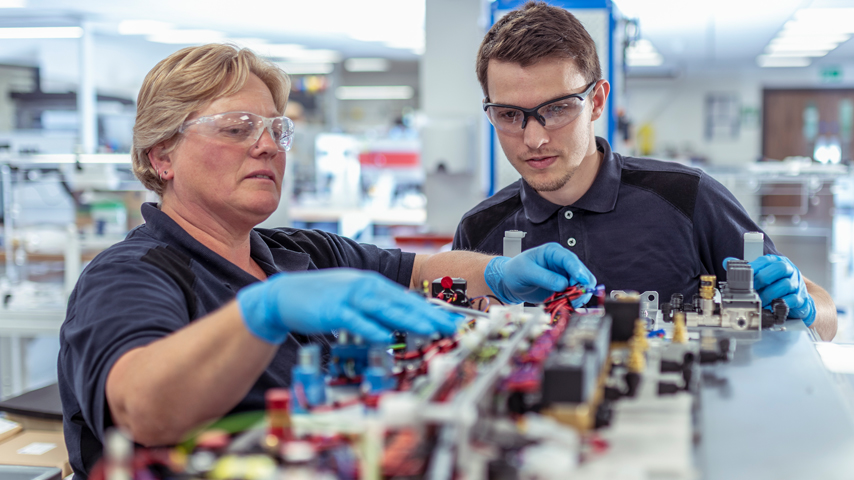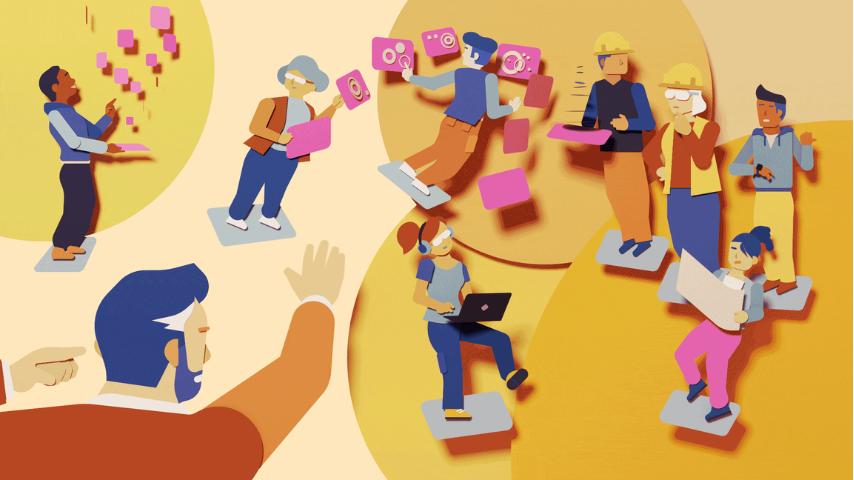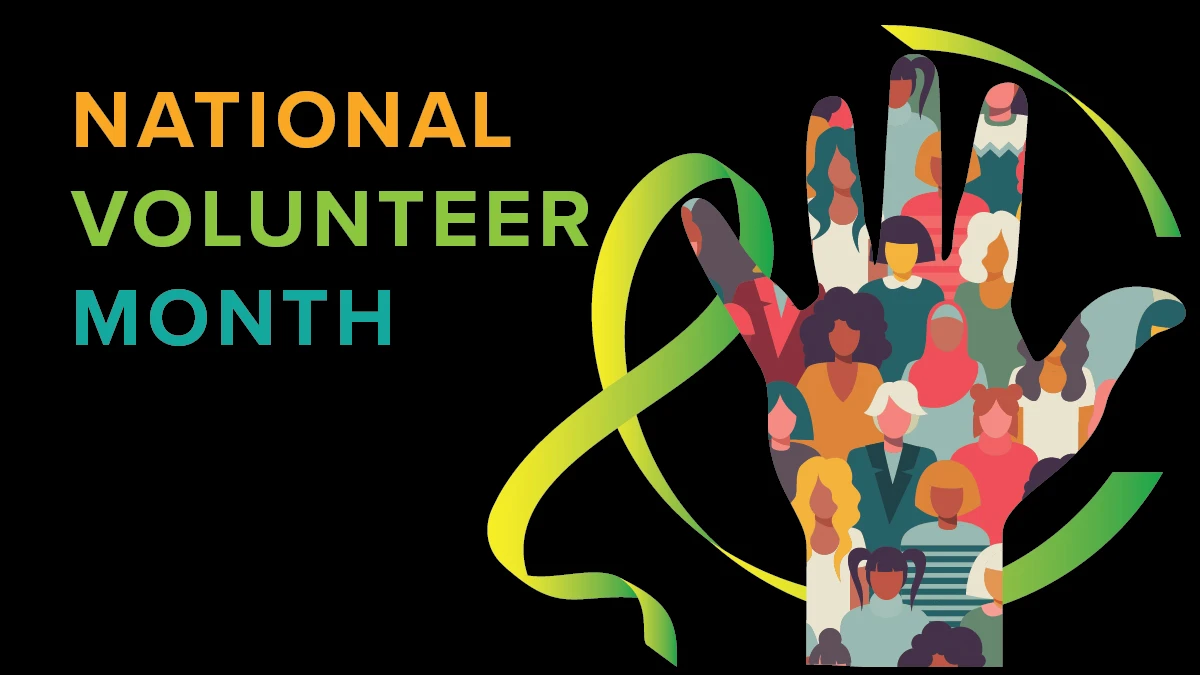Reciprocity is Key When Mentoring Young Engineers
Reciprocity is Key When Mentoring Young Engineers


Valuing generational diversity can make a strong mentorship bond even more valuable. Optimal mentoring relationships embrace the free exchange of ideas.
When mentoring is done right, the person offering guidance can get as much out of the connection as the person receiving it.
“There is a sense of satisfaction when you see somebody achieve a goal and know that you helped,” said Sol Rosenbaum, owner and managing engineer of SR Engineering & Consulting based in Baltimore and founder of The Engineering Mentor website. “When you put an idea in somebody’s head or give them a push in the right direction, then see them succeed, it gives you a good feeling.”
While it may sound otherwise, mentoring—helping with career guidance, networking, navigating professional challenges, and more—doesn’t have to be a huge time commitment.
“It’s about being clear with your boundaries,” Rosenbaum explained. “Just be open and upfront about them.”
Meeting an hour a week or even once a month for lunch or coffee or setting up systems for how you want to communicate “are little actions that can mean so much to a younger engineer,” Rosenbaum said. “Simply say, ‘Hey, what’s going on? How are interoffice politics treating you?’ And just give some guidance. That really does go a long way.”
ASME's Mentoring Program is just one career and professional resource offered exclusively to members.
Where mentors can make a mistake is going into the relationship thinking “I know everything,” said Jon Mort, chief technology officer for The Adaptavist Group, a technical business and consulting firm with headquarters in Toronto and London. “They expect to be almost lecturing. But often what they need to be doing is really listening and making sure that when they’re inputting, it’s high value.”
The mentor should “put a lot of effort into understanding and then steer,” Mort added.
That said, mentors should be open to the learning going the other way as well. Established engineers “come to a problem with a lot of preconceived notions based on experience, and sometimes it takes somebody with no experience to say, ‘Hey, can we try this?’” Rosenbaum said. “And it could be something you’ve never thought of. So maybe they haven’t seen as much, but that doesn’t mean they’re not valuable to the team.”
With as many as four generations now in the same workplace, reverse mentoring has become a buzzword of sorts for recruiting and retaining talent. Adaptavist, for example, has begun introducing short-form and TikTok videos into its corporate marketing.
“[The idea] was initially dismissed as ‘Oh, that’s the kids’ thing,’” Mort said. “But no. It’s more like, ‘There’s a big opportunity here that we’re missing.’ [Uncovering the insight came] through a conversation of just sharing that situational awareness and exchange of experience. The mutual learning in these relationships is super helpful.”
In a recent Adaptavist survey on digital etiquette in the workplace, 56 percent of respondents said they found value in generational diversity. And a mentorship bond can only improve that value.
 “If you’re super experienced and you’re talking with someone who’s just entering the workforce, that could be a very difficult conversation because there’s this massive contextual gap,” Mort said. “Going through those mentoring relationships forces you to get a better understanding of where people are at—because you take the time to understand.”
“If you’re super experienced and you’re talking with someone who’s just entering the workforce, that could be a very difficult conversation because there’s this massive contextual gap,” Mort said. “Going through those mentoring relationships forces you to get a better understanding of where people are at—because you take the time to understand.”
In whichever direction the mentorship relationship flows, Rosenbaum said it’s perfectly fine to step away from meeting temporarily if schedules become too swamped. “This doesn’t have to be an all-or-nothing, all-encompassing type of relationship,” he explained.
Another way to approach feeling overwhelmed is to bring the person with less experience on board with a project that wouldn’t even have been discussed otherwise. “It may be something they wouldn’t have gotten to see, and you get something off your plate,” Rosenbaum said. “It could be a win-win for everybody.”
For those engineers who don’t know where to find someone to mentor, first look inside your organization. The next step is to contact engineering school alumni associations or professional organizations for mechanical engineering. ASME, for example, has a member mentoring program set up and engineers who are interested in becoming mentors can reach out.
Once matched, Rosenbaum suggests finding a connection point. For example, if you attended the same school, ask whether a favorite professor is still there or whether a particular restaurant is still a popular hangout.
Or ask about a hobby. “There’s always one topic where, if you mention it to them, they could ramble on for hours,” he said.
Sometimes personalities don’t mesh. If it’s obvious the match doesn’t suit one or both of you, the mentor should try to suggest a better fit,” Mort advised.
It’s all about respect and a desire to offer much-needed support and feedback. Rosenbaum said, “If you care about the industry, you have to care about the next generation of younger engineers by making sure they’re well-supported.”
Robin Flanigan is an independent writer in Rochester, N.Y.
“There is a sense of satisfaction when you see somebody achieve a goal and know that you helped,” said Sol Rosenbaum, owner and managing engineer of SR Engineering & Consulting based in Baltimore and founder of The Engineering Mentor website. “When you put an idea in somebody’s head or give them a push in the right direction, then see them succeed, it gives you a good feeling.”
Give and take
While it may sound otherwise, mentoring—helping with career guidance, networking, navigating professional challenges, and more—doesn’t have to be a huge time commitment.
“It’s about being clear with your boundaries,” Rosenbaum explained. “Just be open and upfront about them.”
Meeting an hour a week or even once a month for lunch or coffee or setting up systems for how you want to communicate “are little actions that can mean so much to a younger engineer,” Rosenbaum said. “Simply say, ‘Hey, what’s going on? How are interoffice politics treating you?’ And just give some guidance. That really does go a long way.”
ASME's Mentoring Program is just one career and professional resource offered exclusively to members.
Where mentors can make a mistake is going into the relationship thinking “I know everything,” said Jon Mort, chief technology officer for The Adaptavist Group, a technical business and consulting firm with headquarters in Toronto and London. “They expect to be almost lecturing. But often what they need to be doing is really listening and making sure that when they’re inputting, it’s high value.”
The mentor should “put a lot of effort into understanding and then steer,” Mort added.
That said, mentors should be open to the learning going the other way as well. Established engineers “come to a problem with a lot of preconceived notions based on experience, and sometimes it takes somebody with no experience to say, ‘Hey, can we try this?’” Rosenbaum said. “And it could be something you’ve never thought of. So maybe they haven’t seen as much, but that doesn’t mean they’re not valuable to the team.”
Reverse mentors
With as many as four generations now in the same workplace, reverse mentoring has become a buzzword of sorts for recruiting and retaining talent. Adaptavist, for example, has begun introducing short-form and TikTok videos into its corporate marketing.
“[The idea] was initially dismissed as ‘Oh, that’s the kids’ thing,’” Mort said. “But no. It’s more like, ‘There’s a big opportunity here that we’re missing.’ [Uncovering the insight came] through a conversation of just sharing that situational awareness and exchange of experience. The mutual learning in these relationships is super helpful.”
In a recent Adaptavist survey on digital etiquette in the workplace, 56 percent of respondents said they found value in generational diversity. And a mentorship bond can only improve that value.

Navigating Engineering's Generational Gaps
ME Magazine looks into how Gen Z is transforming the workplace.
In whichever direction the mentorship relationship flows, Rosenbaum said it’s perfectly fine to step away from meeting temporarily if schedules become too swamped. “This doesn’t have to be an all-or-nothing, all-encompassing type of relationship,” he explained.
Another way to approach feeling overwhelmed is to bring the person with less experience on board with a project that wouldn’t even have been discussed otherwise. “It may be something they wouldn’t have gotten to see, and you get something off your plate,” Rosenbaum said. “It could be a win-win for everybody.”
Get started
For those engineers who don’t know where to find someone to mentor, first look inside your organization. The next step is to contact engineering school alumni associations or professional organizations for mechanical engineering. ASME, for example, has a member mentoring program set up and engineers who are interested in becoming mentors can reach out.
Once matched, Rosenbaum suggests finding a connection point. For example, if you attended the same school, ask whether a favorite professor is still there or whether a particular restaurant is still a popular hangout.
Or ask about a hobby. “There’s always one topic where, if you mention it to them, they could ramble on for hours,” he said.
Sometimes personalities don’t mesh. If it’s obvious the match doesn’t suit one or both of you, the mentor should try to suggest a better fit,” Mort advised.
It’s all about respect and a desire to offer much-needed support and feedback. Rosenbaum said, “If you care about the industry, you have to care about the next generation of younger engineers by making sure they’re well-supported.”
Robin Flanigan is an independent writer in Rochester, N.Y.



